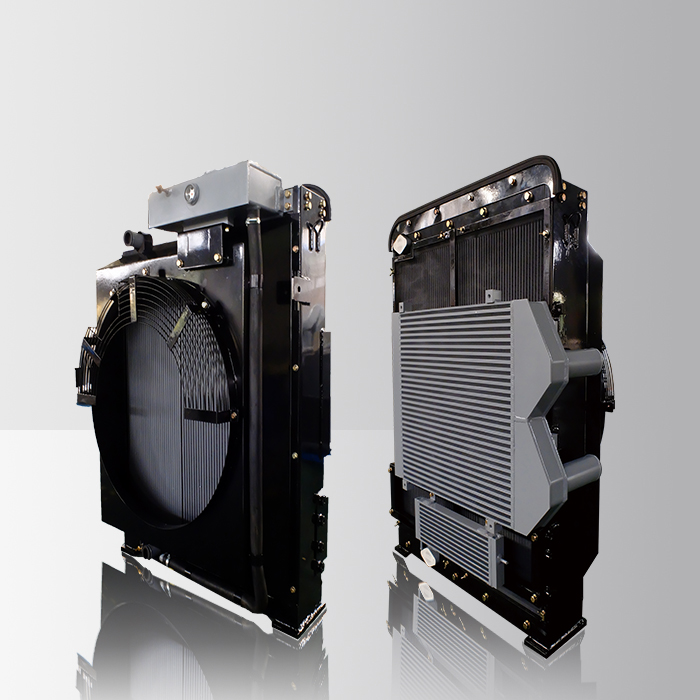[ Instrument R & D of Instrumentation Network ] Recently, the Shenyang Institute of Automation Research Institute of the Chinese Academy of Sciences in Guangzhou (referred to as the “Guangzhou Branchâ€) has made important progress in the self-developed model for radioactive substance dose intensity assessment and radiation monitoring system.
In order to implement the 13th Five-Year Plan for Nuclear Safety and Radioactive Pollution Prevention and Prospects by 2025 and the 13th Five-Year Plan for Environmental Protection in Guangzhou City, and other plans to strengthen the monitoring of nuclear radiation pollution sources, the formation of environmental quality monitoring, early warning monitoring According to the requirements of the radiation monitoring network combined with emergency monitoring, the Radiation Monitoring Project Team of the Internet of Things Technology and Application R & D Center of the Guangzhou Branch has developed a radiation monitoring system with the functions of radiation monitoring, evaluation, early warning and plan; including the fixed end of the source machine, self-organization 5 sets of radiation monitoring products and 2 sets of APP software (radiation monitoring software and large-screen display terminal software) of network gateway, intelligent handheld terminal, wireless dose rate meter and large-screen display terminal.
The project team of the Guangzhou Branch and the City University of Hong Kong jointly carried out a model study on the diffusion of radioactive materials in the city. The two sides cooperated in the assessment of radiation dose intensity, and combined with the Gaussian plume model and the Lagrangian particle tracking system (Gaussian puff model) for the influence of long-range radioactive materials, the changing meteorological conditions and radioactive sources were considered, and more accurate And it is suitable for the mathematical model of long-distance and large-scale migration. The 10-year meteorological records (2009-2018) were collected and used as model input data to evaluate the impact of the nuclear power plant's hypothetical accident on the city.
For urban buildings, a three-dimensional small-scale diffusion model was developed. A computational fluid dynamics model based on the Navier-Stokes equations was used to propose a building structure model. In consideration of the obstacles in front of the building group and the incoming flow and radioactive sources to the rear target building group Under the influence of, the orthogonal test is carried out by changing the distance between the source and the obstacle, the height of the source, the distance between the obstacle and the target, the height of the obstacle and the pollutant of the source, and comprehensively investigating the influence of each parameter on the diffusion. Estimate the spread of radioactive materials among the buildings. The latest results have been published in the Journal of Hazardous Materials.
In recent years, in the field of radiation monitoring, the Guangzhou branch has made important progress in hardware research and development, data collection, data analysis, model construction and other directions. It has signed a sales framework contract with the industry ’s leading companies for radiation protection intelligent monitoring series equipment, which has promoted the products in A number of large nuclear power plants have achieved demonstration
Applications and continued to deepen cooperation with the Nuclear and Radiation Safety Center of the Ministry of Ecology and Environment to help build the national radiation monitoring network.
ThermicTransfer has 14 years of experience in R&D and production of engine radiators. The long-term cooperation engine brands are Yanmar/Cummins/Deutz/Perkins/Kubota/Isuzu/Mitsubishi/MTU. Our experience is based on the engine power provided by the purchaser. Performance curve, single heat dissipation or multiple combined heat dissipation requirements, we simulate the calculation of heat dissipation requirements, and design a three-dimensional cooler solution according to the engine size combined with the installation environment, provide customers with three-dimensional model confirmation, and provide performance parameter reports through simulation calculation. Finally, according to the customer's suggestion to adjust and optimize, form an effective program. We will then provide samples for performance testing, mass production through long-term performance, stress testing, resistance testing, etc.
At present, we design up to 5 combined Heat Exchangers for construction machinery, including two oil coolers, water cooler, Intercooler, and fuel heat exchanger.

Engine Heat Exchanger
Engine Heat Exchanger,Marine Engine Heat Exchanger,Marine Heat Exchanger,Fireplace Heat Exchanger
Xinxiang Zhenhua Radiator Co., Ltd. , https://www.thermictransfer.nl
